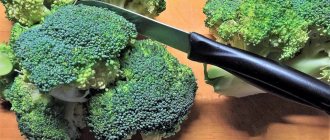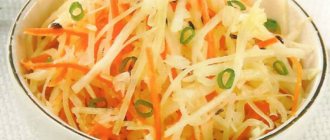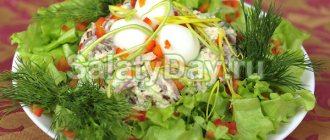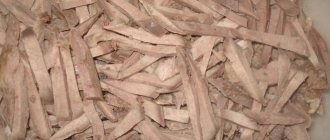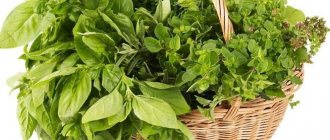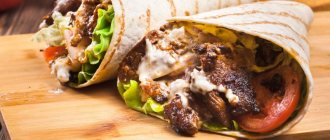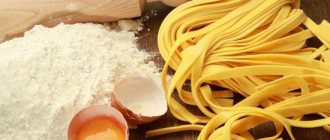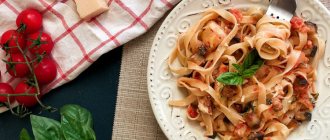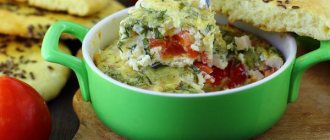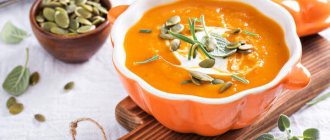Dishes using soy sauce
Soy sauce has a dark brown (almost black) color and a distinct sweet and sour taste.
Depending on the manufacturer and brand, it may have a different flavor. Soy sauce is produced by fermenting soybeans. Soy sauce recipes with photos can be found very easily. You can cook anything yourself with the addition of this ingredient if you follow the recipe. Soy sauce goes great with rice. Many people know that it is better to eat sushi or rolls with it, then they will not only be salty, but also tasty. There are other dishes with soy sauce. You can add it to a meat or fish dish during the cooking process or after it is cooked.
There are about a dozen varieties of soy sauce. They differ from each other in taste, smell, color, composition, consistency. Also, the salt content in it varies. This sauce is often used in Asian cuisine, but it is also used very extensively in others. When choosing a sauce, you should consider its composition. If the packaging says a lot of preservatives of group “E”, then you should abandon this choice and find a quality product.
Recipe for pork goulash with soy sauce. Calorie, chemical composition and nutritional value.
Nutritional value and chemical composition of “pork goulash with soy sauce.”
The table shows the nutritional content (calories, proteins, fats, carbohydrates, vitamins and minerals) per 100 grams of edible portion.
| Nutrient | Quantity | Norm** | % of the norm in 100 g | % of the norm in 100 kcal | 100% normal |
| Calorie content | 305.2 kcal | 1684 kcal | 18.1% | 5.9% | 552 g |
| Squirrels | 11.3 g | 76 g | 14.9% | 4.9% | 673 g |
| Fats | 28.1 g | 56 g | 50.2% | 16.4% | 199 g |
| Carbohydrates | 1.8 g | 219 g | 0.8% | 0.3% | 12167 g |
| Water | 55.6 g | 2273 g | 2.4% | 0.8% | 4088 g |
| Ash | 1.0718 g | ~ | |||
| Vitamins | |||||
| Vitamin B1, thiamine | 0.349 mg | 1.5 mg | 23.3% | 7.6% | 430 g |
| Vitamin B2, riboflavin | 0.104 mg | 1.8 mg | 5.8% | 1.9% | 1731 |
| Vitamin B4, choline | 59.96 mg | 500 mg | 12% | 3.9% | 834 g |
| Vitamin B5, pantothenic | 0.376 mg | 5 mg | 7.5% | 2.5% | 1330 g |
| Vitamin B6, pyridoxine | 0.264 mg | 2 mg | 13.2% | 4.3% | 758 g |
| Vitamin B9, folates | 3.278 mcg | 400 mcg | 0.8% | 0.3% | 12203 g |
| Vitamin E, alpha tocopherol, TE | 1.554 mg | 15 mg | 10.4% | 3.4% | 965 g |
| Vitamin RR, NE | 4.637 mg | 20 mg | 23.2% | 7.6% | 431 g |
| Niacin | 1.975 mg | ~ | |||
| Macronutrients | |||||
| Potassium, K | 214.42 mg | 2500 mg | 8.6% | 2.8% | 1166 g |
| Calcium, Ca | 7.83 mg | 1000 mg | 0.8% | 0.3% | 12771 g |
| Magnesium, Mg | 18.46 mg | 400 mg | 4.6% | 1.5% | 2167 g |
| Sodium, Na | 440.52 mg | 1300 mg | 33.9% | 11.1% | 295 g |
| Sera, S | 0.42 mg | 1000 mg | 238095 g | ||
| Phosphorus, Ph | 124.6 mg | 800 mg | 15.6% | 5.1% | 642 g |
| Chlorine, Cl | 0.59 mg | 2300 mg | 389831 g | ||
| Microelements | |||||
| Iron, Fe | 1.305 mg | 18 mg | 7.3% | 2.4% | 1379 g |
| Manganese, Mn | 0.0007 mg | 2 mg | 285714 g | ||
| Copper, Cu | 0.25 mcg | 1000 mcg | 400000 g | ||
| Tin, Sn | 59.96 mcg | ~ | |||
| Fluorine, F | 42.08 mcg | 4000 mcg | 1.1% | 0.4% | 9506 g |
| Digestible carbohydrates | |||||
| Starch and dextrins | 1.301 g | ~ | |||
| Mono- and disaccharides (sugars) | 0.5 g | max 100 g | |||
| Essential amino acids | |||||
| Arginine* | 0.7035 g | ~ | |||
| Valin | 0.6635 g | ~ | |||
| Histidine* | 0.4557 g | ~ | |||
| Isoleucine | 0.5676 g | ~ | |||
| Leucine | 0.8554 g | ~ | |||
| Lysine | 0.9913 g | ~ | |||
| Methionine | 0.2718 g | ~ | |||
| Methionine + Cysteine | 0.4237 g | ~ | |||
| Threonine | 0.5196 g | ~ | |||
| Tryptophan | 0.1519 g | ~ | |||
| Phenylalanine | 0.4637 g | ~ | |||
| Phenylalanine+Tyrosine | 0.8794 g | ~ | |||
| Nonessential amino acids | |||||
| Alanin | 0.6156 g | ~ | |||
| Aspartic acid | 1.0553 g | ~ | |||
| Hydroxyproline | 0.1359 g | ~ | |||
| Glycine | 0.5596 g | ~ | |||
| Glutamic acid | 1.7748 g | ~ | |||
| Proline | 0.5196 g | ~ | |||
| Serin | 0.4877 g | ~ | |||
| Tyrosine | 0.4157 g | ~ | |||
| Cysteine | 0.1439 g | ~ | |||
| Sterols (sterols) | |||||
| Cholesterol | 55.96 mg | max 300 mg | |||
| beta sitosterol | 5.6101 mg | ~ | |||
| Saturated fatty acids | |||||
| Saturated fatty acids | 9.8 g | max 18.7 g | |||
| 14:0 Miristinovaya | 0.3438 g | ~ | |||
| 15:0 Pentadecane | 0.016 g | ~ | |||
| 16:0 Palmitinaya | 6.0418 g | ~ | |||
| 17:0 Margarine | 0.0879 g | ~ | |||
| 18:0 Stearic | 3.2168 g | ~ | |||
| 20:0 Arakhinovaya | 0.0084 g | ~ | |||
| 22:0 Begenovaya | 0.0196 g | ~ | |||
| Monounsaturated fatty acids | 12.963 g | min 16.8 g | 77.2% | 25.3% | |
| 14:1 Myristoleic | 0.008 g | ~ | |||
| 16:1 Palmitoleic | 0.8874 g | ~ | |||
| 18:1 Oleic (omega-9) | 11.6491 g | ~ | |||
| Polyunsaturated fatty acids | 4.5874 g | from 11.2 to 20.6 g | 41% | 13.4% | |
| 18:2 Linolevaya | 4.2996 g | ~ | |||
| 18:3 Linolenic | 0.1759 g | ~ | |||
| 20:4 Arachidonic | 0.1119 g | ~ | |||
| Omega-3 fatty acids | 0.2 g | from 0.9 to 3.7 g | 22.2% | 7.3% | |
| Omega-6 fatty acids | 2.7 g | from 4.7 to 16.8 g | 57.4% | 18.8% |
The energy value of pork goulash with soy sauce is 305.2 kcal.
Primary Source: Created in the application by the user. Read more.
** This table shows the average levels of vitamins and minerals for an adult. If you want to know the norms taking into account your gender, age and other factors, then use the “My Healthy Diet” application.
Delicious dishes with soy sauce
Soy sauce is used in the process of marinating meat, fish and poultry. You can pour soy sauce over the chopped pork, add pepper and onion rings. Then leave the meat in the refrigerator for several hours, and then fry excellent kebabs in nature. Dishes containing soy sauce usually do not need additional salt. The sauce itself already contains the required amount of salt. But, if the sauce is bland, then it will be necessary to add salt to the dish during cooking.
To prepare a delicious dish, you should choose a high-quality sauce, since a low-quality product can ruin it. It is better to buy this product in specialized Japanese or Chinese online stores. But this is not always possible, so housewives go to a regular supermarket. Simple soy sauce dishes can turn out delicious if the sauce itself is of the right quality.
When choosing soy sauce in a store, you should pay attention to what is written on its packaging. The bottle itself should be transparent. It can be glass or plastic. The liquid in it is dark in color and without sediment. Soy sauce should be made by naturally fermenting the beans rather than by chemical processing. Ingredients: soybean mixture, water, salt. Inexpensive products contain preservatives and flavor enhancers.

What is soy sauce
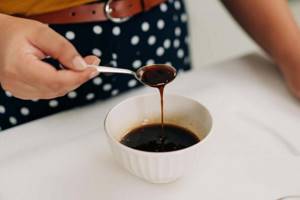
Soy products are considered important components of any Japanese dish. There should always be a special dressing on each table. In the 21st century, it began to be used not only by residents of the land of the setting sun. The gas station went on a journey around the world.
It is known that it first appeared in China. Statistics say that the average Japanese consumption per year is 13 liters. The Dutch were able to create a dish and work on its digestibility. The mixture, whose density is slightly viscous, gives a specific flavor and makes food soft and juicy.
The supplement is beneficial for the body and consists of a large amount of vitamins and microelements with amino acids. The amount of antioxidants is 10 times more than red wine. This is why soybeans fight aging and prevent malignant tumors from growing.
The presence of phytoestrogens has a positive effect on the female body, as hormone levels are normalized during menopause, bones and joints are strengthened. Consumption of the dressing is recommended for those who have suffered a heart attack and have other problems with the heart muscle. But kidney disease or allergies can be a serious obstacle.
Sauce should be added to food for added flavor. There are two types: light and dark. The first is distinguished by its lightness of taste, since its applications for seafood, rice, and pasta are obvious. The second one is preferred by those who consume spicy food, so it is used to marinate meat and add it to sushi.
The excise product is sold in glass, and soy sauce always includes soybeans, wheat, salt, sugar and vinegar. The more unclear additives there are on ethics, the higher the likelihood that it is not necessary to take it, since such a surrogate can seriously harm.
The color of the classic sauce is brownish with slight transparency, and the amount of protein varies from 6 to 8%. Low calorie content increases its popularity. Seasoning is often added to dietary dishes.
Who invented soy sauce
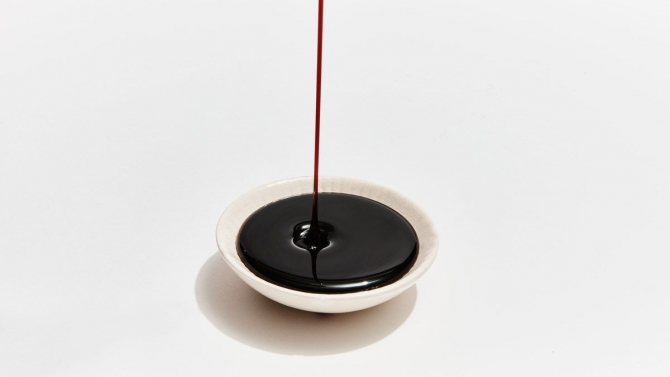
Why is soy sauce so important? This is an enzymatic product whose history goes back a long way. Its production was invented a long time ago in Japan from fermented fish. Even now, some establishments serve this type of dressing.
Now they have begun to use the hata-hata fish, which lives on the island of Honshu. It is left to ferment in vats, and the plum sauce is called shotsuru. When Buddhism reached Japan, the cuisine began to change noticeably. It was during this period that fish sauce began to be replaced by soybean garnish. The traditional dish remains only in certain northern areas.
The word “sauce” itself is represented by two hieroglyphs. Previously, it was thick and unfiltered; it was often added to pickled vegetables. This dish was prepared only for important people. In ancient times, the wheat content was 5%, and the recipe can be compared to today's tamari sauce.
The first mention of the recipe dates back to 1695. The seasoning was used to serve with hot appetizers or soups. Over time, the recipe changed. The sauce is still consumed by the Japanese today, as it is an integral part of their cuisine. Low calorie content allows you to add it to any dish, highlighting the taste of soy sauce and making it special and soft.
Soy sauce history

Dressing is considered one of the important components of Asian cuisine. The product is presented in the form of a dark liquid with a pungent odor and a large amount of microelements and vitamins. Its presence emphasizes the brightness of any dish.
Its appearance occurred in the 8th century BC. The seasoning is still popular today. To save ingredients, they began to dilute soybeans with water. After replacing fermented fish, they completely switched to soy sauce, called jiangyu in China.
In the 18th century, the side dish gained popularity in the European part of the continent. A large number of types of sauce traveled throughout Europe, but closer to the 19th century, Japanese was completely replaced by Chinese, as its taste was more popular and its health value was higher. It was produced traditionally or through fermentation. Both varieties turned out to be extremely tasty and healthy.
The main purpose of the additives is the preparation of Japanese teriyaki sauce, which is characterized by a “glazed” appearance and bright taste. The method of cooking beef, poultry or fish on the grill becomes even easier, tastier and healthier. In China, they also take additives seriously, so sauces are divided into boiled and mixed.
Most popular recipes
Below are recipes for some soy-honey sauces that do not require much time, effort or culinary skills to prepare.
Classic version
Ingredients:
- vegetable oil - 35 g;
- honey - 60 g;
- soy sauce - 34 g.
For this sauce, you can use any honey except buckwheat, which can add unnecessary bitterness to the sauce. You can also use candied honey, but in this case you will have to heat it in the oven or microwave (be careful - do not let it boil!).
Pour soy sauce with honey and vegetable oil into a deep bowl. Mix thoroughly until the mixture has a homogeneous consistency. Oil simply bought in a store will do, but for extra piquancy it can be infused with aromatic herbs.
This sauce can be stored in the refrigerator in a sealed container for several days.
Garlic sauce
Ingredients:
- flower honey - 2-3 tbsp. l.;
- soy sauce - 100 ml;
- black peppercorns - 5-7 peas;
- garlic - 3-4 cloves.
First, heat the honey in a saucepan over low heat. Pour in the soy sauce and whisk thoroughly until the mixture is smooth. Peel the garlic and pass through a press. Stir garlic into honey-soy mixture. Grind black peppercorns in a mortar. In this case, its aroma will be more intense than if you use purchased ground pepper. Add to sauce. Salt is usually not added since it is already contained in soy sauce.
This sauce serves as an ideal marinade for oven-roasted meats and poultry. Chicken wings turn out especially well. You can also serve it as a seasoning for the table; it will serve to give a particularly festive look to the meal. It can also be used for frying meat or poultry over an open fire.
Beetroot
Discussion: 2 comments
- Lydia:
08/24/2014 at 14:15Oh, today we have pasta as a side dish, so I’ll prepare your sauce, thank you! :bye:
Answer
- Vadar:
08/31/2014 at 10:00
Apart from the first one, I really liked all the other sauce recipes! Thank you! God willing, we will definitely prepare it! :good:
Answer
Shrimp fried with garlic and soy sauce
An exotic and incredibly tasty dish will not leave anyone indifferent.
For cooking you will need:
shrimp (preferably king) – 0.5 kg; oil (preferably olive); soy sauce – 260 ml; parsley (fresh); lemon – 1 pc.; garlic - 2 teeth.
Cooking process:
Wash and dry the shrimp. Place them in a hot frying pan greased with olive oil and garlic. Add soy sauce and fry, stirring constantly, for 5 - 7 minutes. Place the prepared seafood on a plate and pour over lemon juice. Decorate with parsley.
Types of soy sauce
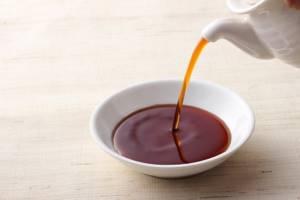
Few people know that there are many recipes for its preparation, and each of them includes a complex fermentation process. Its type depends on the exposure periods:
- Light. It takes a little time to prepare. It is characterized by a light brown color and a pleasant aroma; it serves as an excellent addition to any dish.
- Dark. It is characterized by long aging and a fermentation period of about a year. The thick consistency has a pungent odor and is recommended for marinating meat or fish.
Store-bought ones are noticeably different from home-made ones, but the latter are higher in terms of usefulness.
Salad with soy sauce dressing
A unique recipe for those who maintain a slim figure.
To implement it you will need:
Beijing - 200 g; ground pepper – 1 tsp; soy sauce – 5 tbsp. l.; cucumber – 2 – 3 pcs.; oil (preferably olive) – 2 tbsp. l.
Cooking process:
We chop the cabbage and mash it a little with our hands right in the salad bowl.
Three cucumbers on a Korean carrot grater. Season the vegetables with soy sauce. Add pepper and olive oil to the salad. This salad and shrimp fried with garlic and soy sauce will complement each other perfectly.
Many dietary salads are prepared using soy sauce. It contains almost no calories and can be an equivalent replacement for salt.
What is soy sauce made from?

Authentic Asian cuisine is famous for its delicious sauces. Soy is characterized by a neutral taste called umami, which is responsible for the naturally occurring monosodium glutamate. The preparation of traditional soy sauces involves the fermentation of a mixture of beans and grains of moldy mushrooms. Previously, this was exposed to the sun in huge vats to allow the wort to ferment.
The total cooking time lasts 3 days. The smells and texture are not the same as traditional ones, but they also have a much longer shelf life, so the amount produced is different.
How is soy sauce made? Traditional production is divided into several stages:
- soaking and boiling the beans until tender with frying and pounding the wheat;
- combining beans and grains with sowing spores of a certain type of fungus;
- going through the fermentation process by soaking beans and grains with saline solution;
- pressing to separate the sauce from the waste;
- pasteurization to remove mold and yeast;
- filtering for product sales.
Often, soy sauce becomes the basis for beef or poultry marinade. A real storehouse of amino acids and antioxidants. All components prevent the occurrence of serious diseases.
